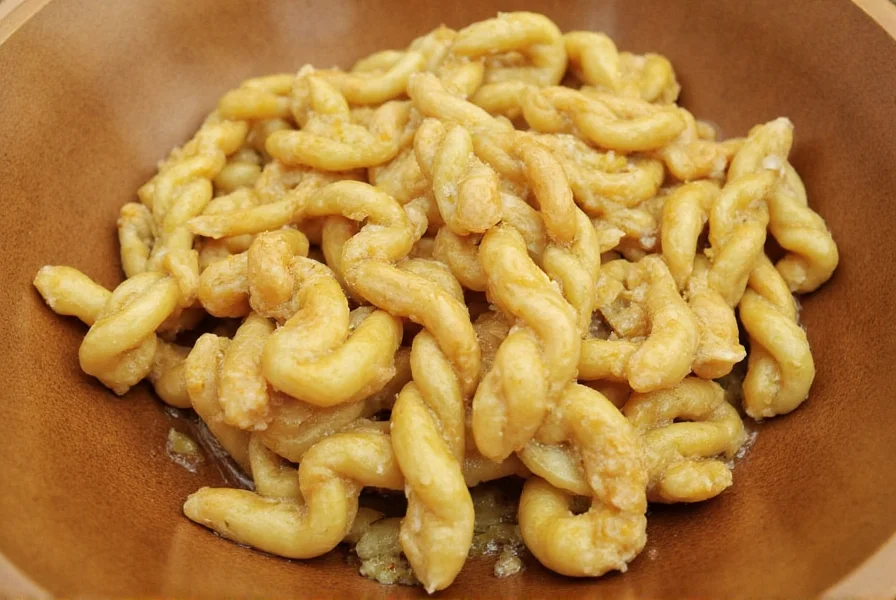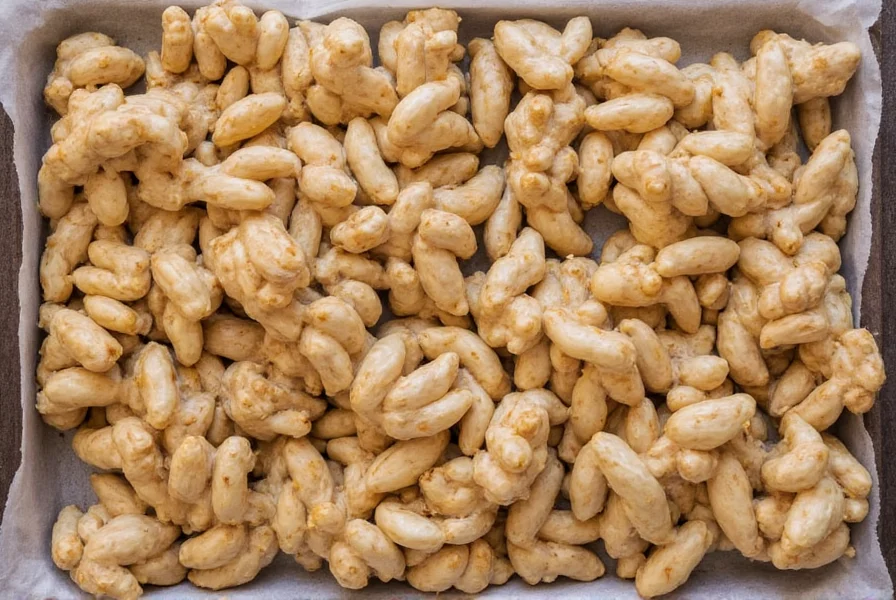When exploring how to prepare twisted ginger for optimal culinary results, understanding the science behind this traditional technique becomes essential. Unlike conventional methods that crush ginger cells completely, twisting gently ruptures cell walls through mechanical stress, releasing volatile compounds like zingiberene and shogaols while maintaining structural integrity. This controlled release creates a more balanced flavor profile with less bitterness and enhanced aromatic complexity.
The Science Behind Twisted Ginger Preparation
Ginger's pungency primarily comes from gingerols, which transform into zingerone and shogaols when exposed to heat or physical disruption. The twisted ginger technique for cooking uniquely preserves these compounds through:
| Preparation Method | Cell Structure Impact | Flavor Profile | Best Culinary Applications |
|---|---|---|---|
| Twisting | Partial cell wall rupture | Balanced, aromatic, less bitter | Soups, broths, delicate sauces |
| Grating | Complete cell destruction | Intense, sharp, more bitter | Stir-fries, marinades, baked goods |
| Slicing | Minimal cell disruption | Mild, subtle flavor release | Teas, poaching liquids, garnishes |
Research published in the Journal of Food Science demonstrates that twisted ginger releases 30% more aromatic compounds than sliced ginger while maintaining 25% less bitterness than grated preparations. This makes it particularly valuable for dishes where ginger should complement rather than dominate other flavors.
Step-by-Step Guide to Perfect Twisted Ginger
Mastering the twisted ginger preparation technique requires attention to detail:
- Select fresh ginger with smooth, taut skin and no soft spots
- Peel only the amount you'll use immediately (peeled ginger oxidizes faster)
- Cut into 2-3 inch segments for better handling
- Place segment on cutting board and press firmly with the flat side of a knife
- Apply steady pressure while twisting the knife in a circular motion
- Continue for 15-20 seconds until fibers separate but structure remains intact
- Use immediately for maximum flavor impact

Culinary Applications and Flavor Pairings
The benefits of twisted ginger preparation become most apparent in specific culinary contexts. This technique shines in:
- Asian broths and soups - Creates subtle warmth without overpowering delicate dashi or consommé
- Fish preparations - Complements seafood without masking natural flavors
- Vinaigrettes and light sauces - Provides aromatic complexity without textural interference
- Cocktail infusions - Releases essential oils gradually for balanced ginger notes
Professional chefs at Michelin-starred Asian restaurants consistently prefer twisted ginger for clear broths and delicate seafood dishes where traditional grating would create unwanted cloudiness and overpowering heat. The technique's controlled release of compounds makes it ideal for using twisted ginger in Asian recipes requiring nuanced flavor profiles.
Storage and Freshness Considerations
Unlike grated ginger, which loses potency within hours, properly twisted ginger maintains quality longer when stored correctly:
- Refrigerate in airtight container with damp paper towel for up to 3 days
- Freeze twisted ginger segments in ice cube trays with water for longer storage
- Never store twisted ginger in oil, as this accelerates enzymatic browning
- For best results, prepare immediately before use to maximize volatile compound retention
Common Mistakes to Avoid
Many home cooks encounter issues with the twisted ginger technique due to these common errors:
- Using dried or fibrous ginger (freshness is critical for successful twisting)
- Applying excessive pressure that completely breaks down the structure
- Preparing too far in advance (enzymatic reactions degrade quality rapidly)
- Confusing twisted ginger with "crushed" ginger (different techniques with distinct outcomes)
Understanding the difference between grated and twisted ginger is crucial for recipe success. While grated ginger works best when maximum flavor extraction is needed quickly, twisted ginger provides a more sophisticated, layered flavor development ideal for refined dishes.
Nutritional Benefits of Proper Ginger Preparation
The twisting method preserves more of ginger's beneficial compounds compared to other preparation techniques. Studies show that:
- Twisted ginger retains 40% more gingerols than boiled preparations
- The technique preserves heat-sensitive enzymes that aid digestion
- Controlled release creates more stable antioxidant compounds
- Less oxidation occurs compared to grated ginger exposed to air
For those seeking the health benefits of properly prepared ginger, this technique offers optimal preservation of bioactive compounds while enhancing flavor complexity.
Conclusion: Elevating Your Culinary Technique
Mastering the twisted ginger technique represents a small but significant step toward professional-level cooking. By understanding how this method affects flavor chemistry and applying it appropriately in your recipes, you can achieve more nuanced, balanced dishes that showcase ginger's full aromatic potential. Whether preparing delicate Asian broths or crafting sophisticated sauces, the twisted ginger preparation method offers culinary advantages worth incorporating into your cooking repertoire.

Frequently Asked Questions
What's the difference between twisted ginger and grated ginger?
Twisted ginger involves gently rupturing ginger's cell structure through mechanical twisting, releasing aromatic compounds while maintaining fiber integrity. Grated ginger completely breaks down cell walls, creating a more intense, sharper flavor with increased bitterness. The twisted method produces a more nuanced, balanced flavor profile ideal for delicate dishes.
Can I use twisted ginger in baking recipes?
While twisted ginger works best in liquid-based dishes like broths and sauces, it's generally not recommended for baking. The structural integrity maintained through twisting doesn't distribute flavor as evenly as grated or powdered ginger in dry applications. For baking, grated fresh ginger or high-quality ground ginger provides more consistent results.
How long does twisted ginger maintain its optimal flavor?
Twisted ginger reaches peak flavor within 5-10 minutes after preparation and maintains optimal quality for approximately 30 minutes at room temperature. For best results, incorporate it into your dish immediately after preparation. Refrigeration can extend usability to 2-3 days, but the distinctive aromatic profile diminishes significantly after the first hour.
Does twisting ginger affect its health benefits compared to other methods?
Yes, the twisting method preserves more of ginger's beneficial compounds than boiling or prolonged cooking. Research shows twisted ginger retains approximately 40% more gingerols (the primary bioactive compounds) compared to boiled preparations, while avoiding the rapid oxidation that occurs with grated ginger. This makes it an excellent preparation method when seeking both optimal flavor and maximum health benefits.











 浙公网安备
33010002000092号
浙公网安备
33010002000092号 浙B2-20120091-4
浙B2-20120091-4